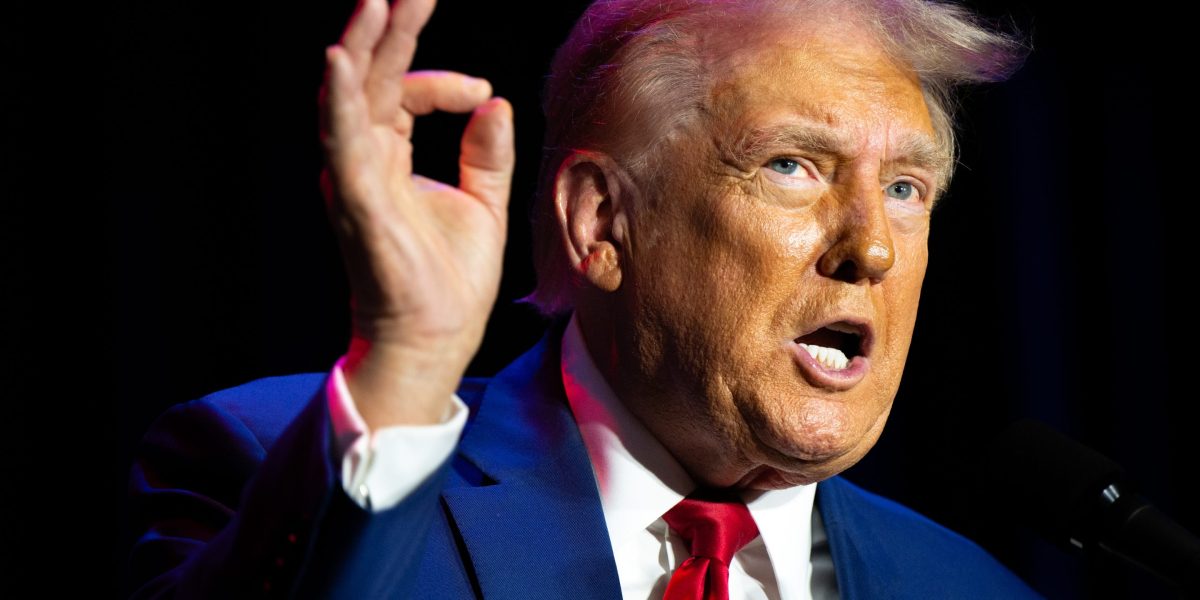Morgan Stanley economists estimated that implementation of Republican tariff-hike proposals would drive up inflation and impose a hit to US economic growth that undercuts employment.
“If the proposed tariffs are fully implemented, we estimate a near-term acceleration in the inflation rate, and a delayed drag in GDP growth,” Morgan Stanley economists led by Seth Carpenter wrote in a note Monday.
The bank’s economists and strategists modeled a scenario in which Donald Trump wins the White House and quickly moves to implement a 10% additional blanket tariff on global imports and a 60 percentage points additional tariff on inbound shipments from China. That would mean tariffs average as high as 25% to 35% for about half of US industries, the team estimated.
“The inflationary effect happens more quickly, judging from history,” Morgan Stanley’s economists said. The model indicates a 0.9 percentage point bump up in the PCE price gauge — the Federal Reserve’s preferred index — over four quarters.
As for economic growth, the higher tariffs would crimp investment spending as well as consumption, offsetting a positive impact to gross domestic product from lower imports, according to the bank. GDP growth would decelerate by 1.4 percentage point “over several quarters,” the bank said.
Direction ‘Clear’
Monthly US payroll gains would fall by 50,000 to 70,000, the bank’s model showed. So far this year, payrolls have averaged 184,000 in increases a month.
“The magnitude of the economic effect” of the tariff increases will depend on the details, Carpenter and his colleagues wrote. Those include the ultimate scale of the hikes, their timing, possible retaliation by trading partners and the reaction of the currency market. “But the direction of travel is clear.”
The Trump campaign didn’t immediately respond to a request for comment Monday. Earlier this month, when asked about predictions showing a hit to US growth from tariff hikes, the campaign highlighted that forecasters had failed to anticipate the pickup in growth that followed Trump’s victory in 2016.

